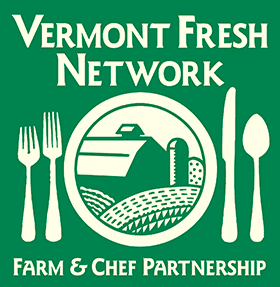Hashtags 101
 November 13, 2018
November 13, 2018
Yes, it's a post about hashtags. Why is a local food system nonprofit doing that? Especially at Thanksgiving time? Because over the last month we've received many requests to explain hashtags - more even than requests to explain turkeys or Thanksgiving wine options. We're community minded and so here we are:
An Introduction to Hashtags (2018)
The very short answer to “what is a hashtag?” is - those words you see #written with a #poundmark and #nospaces or punctuation in social media posts.
Most of the major social media networks use hashtags in some way. They began on Twitter, today Instagram is probably the network best known for this system.
A hashtag is a way to organize and sort social media posts. You can enter hashtags into the search on any social media account to find subjects that interest you. You can also search for hashtags through Google. It’s like a table of contents that is always evolving, and you can tag your own posts to be sure they’re part of it.
How do you use hashtags?
Many social media networks use hashtags. Instagram is well known for lots of hashtags (TrackMaven claims 9-10 per post is optimal) while Twitter and Facebook use them selectively (1-2 is best).
You can add hashtags to your posts directly - either in the text (common for Twitter: “Look at this delicious #vtfood I found at the #vfnforum”) or in a list at the end of your message (Instagram often does this, either in the caption or as a follow up comment).
The universal rules of thumb are:
- Use only hashtags that help people find relevant content. The index just doesn’t work if lots of people are tagging pictures of apples with #orange. Also, sometimes it’s not nice. How would you like it if New Hampshire started using the tag #vtmaple to get more maple traffic? You wouldn’t. Similarly, trying to take over someone’s hashtag is something that does happen, but it’s bad form. A few years ago Bloomberg TV tried to hijack the #BTV hashtag. Chaos ensued.
- Don’t rely on very broad or very popular tags. Yes, #food may be correct for your post and you might use a few general tags, but you’ll need to narrow it down a bit for it to be useful in capturing the correct audience.
- If you don’t know how a hashtag is being used, look it up. It’s the Internet, some things mean weird stuff that you wouldn’t guess and what seems like a general tag might have a very specific meaning. On a related unintended consequences note, remember there are no spaces or punctuation in hashtags, so take a glance at what your words look like all jumbled together before you post (the famous example is the ill-fated "susan album party" tag for a Susan Boyle CD release - and if you don't see the problem with that when rewritten, then congratulations on being very wholesome).
There are lots of possible tags, what are the right ones?
There are a lot of ways to find the best hashtags for your messages and the right ones will be different with different posts - here are a few ways to get started.
- If you are posting regarding a specific event or project - let’s say you’re showing off your table at the Cheese Festival or asking folks to come to Open Farm Week - then the organizers of that event / project will likely have chosen a hashtag. Check their participation materials and online promotions beforehand to know what that tag is. And be sure to use it. That lets others interested in the event find you, and you can find them too - ‘like’, share or comment on their posts, that’s the social in social media.
- In addition to specific events, hashtags are also pre-selected for broader ideas or campaigns. You find out about these types of hashtags by seeing them on other posts, paying attention to what tags are used when someone re-posts one of your items, or seeing the campaign promoters’ outreach materials. #RootedInVermont at Farm to Plate is a good example of one of these types of hashtags.
- Follow a few experienced social media posters in your particular field (grassfed meat, craft cocktails, artisan flower farms, etc.), in your broader field (sustainability, farming, Vermont business, etc.), and in your local region to see what they use for tags. Then use the ones that fit. You’re supposed to use them, that’s the whole point.
- Pay attention to hashtags that you really like or find yourself using often. Instagram makes this particularly easy by letting you “follow” a hashtag. See what other tags are used in combination with them, see who else is frequently posting with those tags and check out their other content. You can build out from your favorite tags to capture folks with related interests. This is how hashtags are a good way to expand your audience.
- If you want to get further into this strategy, there are different tools for tracking hashtags across social media platforms. If you’re curious to see this in action try a basic Tagboard account, it’s free and pretty straightforward. If you’re promoting a tag of your own, say for an event you’ve organized, this is an easy way to see who’s using it and share their content with your own network.
- You can also use this tracking to form some basic social media strategy. If you’re a #vtwine aficionado and all your pictures are of wine bottles, but everyone else using the wine tags seems to have wine + food (and tags the food) or wine + outdoor settings (and tags the beautiful view) then perhaps it’s time to expand your tags and your repertoire.
Hashtag vocabulary list to get you started
(Bearing in mind that it is November 2018 when this is written so things might have changed for you future readers)
Hashtags that local food organizations promote:
- #RootedInVermont is a project of Vermont Farm to Plate, use it to tag posts that show Vermonters' pride in local food.
- #DigInVT works for agritourism related posts, highlight authentic food & farm experiences for both Vermonters and visitors, and celebrations of local food.
- #ThisIsVT from the Dept of Tourism is. . .self explanatory. Vermont stuff.
- #VFNEats and #VFNDrinks tag food and beverage from Vermont Fresh Network Partner Members and events promoted by VFN, for the August Annual Forum Dinner you can also add the #VFNForum tag.
- #VTOpenFarm - events and places participating in Vermont Open Farm Week (every August).
- #VTCheeseFest - Vermont Cheese Festival
Other general hashtags used often to highlight Vermont food, drink, and farm-related activities:
- #vermont (for obvious reasons)
- #vermontbyvermonters
- People also use #vermonting but I can't condone crimes against grammar like that, I'm too old, if you're a Millennial then by all means go ahead and put verbs where they don't belong.
- #vermontlife
- #vermontfarm
- #vermontcheese - as of this writing has more Instagram tags than the alternative#vtcheese .
- #vermontmilk - only has 40 posts on Instagram right now, I'm sure we can turn that around.
- #vtbeer - as of this writing has more Instagram tags than the alternative #vermontbeer - why is this inverse? I don't know. When in doubt, use both.
- #vtwine - has more posts than #vermontwine (also, tag the grape - #LouiseSwenson may one day go viral, who knows? In the case of Marquette, #MarquetteGrapes is the best choice so as not to confuse the people of Michigan).
- #vermontmaplesyrup - of the many ways to turn this product into a hashtag, here is the one that's most commonly used
- #vteats and #drinkvt - I know, I know these are not parallel, the theme of this list is rapidly becoming that when you turn to crowdsourcing, copy editors everywhere should seek a good therapist. I didn't invent the system, I'm just reporting on it.
Vermont food posts often have a broader "artisan" or "craft" tie-in like #craftcocktails, #craftbeer, #artisanbread, #artisancheese and #farmfresh
Another frequent tie-in is recreation and other outdoor activities. Common tags to go with those #skivermont #ridevermont #bikevt #hikevt #foliage #vermontwinter #vermontsummer
On a platform like Instagram, where as many as 10 tags are normal, if you're looking for a basic formula to get started: copy a few tags from this list that fit your post, throw on anything that states what the photo is (#dessert or #beets, for example), if it's food include any particular dietary elements folks might look for (#vegan or #glutenfree), if you're doing an activity tag that (#skivermont or #baking), and tag where you are if it's relevant (town name).
There are some folks who get really really dorky about hashtags. . .
Just like there are umpteen analytics for a website, ditto for hashtags. And scores of tech writers dissecting those analytics for their audience. If you’re looking for a quick way to get current insights, one thing to remember - it’s in the best interest of social media platforms to see their customers effectively using tags (we are organizing their content for them, after all). This means that their own blogs often feature up-to-date info on what’s hot in hashtags. Try searching these as a first step:
Final Note
The bottom line is…. Yes, hashtags can be a little confusing but try not to overthink or overdo it with hashtags. If you need to start off small, keep a short list of hashtags on your phone or computer (wherever you do your posting) to copy and paste into posts. With a little research and as you use them more, you’ll learn which ones are relevant to you and your community and start to broaden your “vocabulary”. Pretty soon, it will be second nature and you’ll see how quickly your followers circle can grow as you start to find each other through shared interests you find via hashtags.

